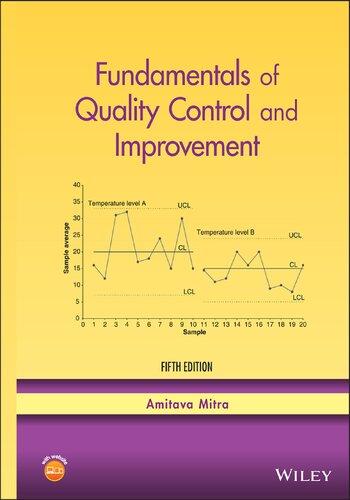Question
1. Which of the following is a cost associated with overstock situations? Follow-on business Goodwill and reputation Markdown costs Lost revenues 2.Which of the following
1. Which of the following is a cost associated with overstock situations?
|
2.Which of the following are following are important documents that you need to legally turn an order over to the carrier?
|
3.Which of the following is NOT a question that your transportation management system will answer?
|
4.CPFR helps trading partners work together to build a single, agreed-upon forecast. CPFR argues that someone already knows what your company's sales will be. Who is that someone?
|
5.Integrated Business Planning (IBP) helps you align _______ and_______.
|
6.Which of the following is/are part of the five monthly review meetings for the S&OP planning process?
|
7.S&OP can help you smooth out the handoffs among different functions across your company. S&OP also helps you move from a traditional annual planning process to a _______ re-planning process.
|
8. Forecasts are based on what two things?
|
9.Under which circumstances would you use a qualitative forecast?
|
10.When measuring forecast error, which forecasting error expresses the forecast as a percentage from the mean?
|
11. Why do railroads require greater volumes of freight in order to be profitable?
|
12.Which combination of modes is most common for international shipping?
|
13.Container on Flatcar (COFC) is a combination of which two modes of transportation?
|
14. Which mode of transportation is the slowest yet offers very reliable service?
|
15. Which of the following items is a product-related transportation cost factor?
|
16. When shipping by LTL carrier, which product is likely to have the highest freight classification?
|
17. Who is responsible for what activities when a shipment has the following terms: FOB origin/collect/allowed?
- The buyer arranges transportation and pays the carrier, and then the carrier charges the seller.
- The seller arranges transportation, pays the carrier, and then adds the shipment expense to the product invoice.
- The buyer arranges transportation, but the seller pays the carrier directly.
- The buyer arranges transportation and pays the carrier, but discounts the shipment expense from the product invoice.
18.What is the term that refers to the increasing time and cost associated with moving a standard distance (e.g., a mile) due to inefficiencies in transportation caused by poor infrastructure and traffic congestion?
|
19. When a shipper considers the trustworthiness of possible carriers, this would be what kind of criterion?
|
20.What is the term that applies to the holistic process that brings together shippers, carriers, and receivers to drive inefficiencies out of the transport planning and execution process?
|
21.Which of the following is a cost associated with stockouts?
|
22.What is a tradeoff of consolidating orders to save costs?
|
23. The supplier of the complete order cycle includes all BUTwhich of the following activities?
|
24. What analysis should you perform to design the right product support requirements?
|
25. Logistics can provide a competitive advantage post delivery. Which of the following is the best way to earn customer loyalty?
|
26. Which of the following is true of S&OP?
|
27.Sometimes, you simply can't increase manufacturing capacity, speed up logistics, or solve a supply shortage in your efforts to meet customer needs. Your only real option is to work with marketing to persuade customers to shift their demand. What are the two levers of influence to shift that demand?
|
28. Given the following forecast and demand information, what is the MAPE?
| Demand | Forecast | Error | Absolute Value | Squared Error | Absolute Percent Error |
|---|---|---|---|---|---|
| 1258 | 1295 | -37.00 | 37.00 | 1369.00 | 0.0294 |
| 1267 | 1275 | -8.33 | 8.33 | 69.44 | 0.0066 |
| 1256 | 1262 | -6.00 | 6.00 | 36.00 | 0.0048 |
| 1268 | 1260 | 7.67 | 7.67 | 58.78 | 0.0060 |
| 1277 | 1264 | 13.33 | 13.33 | 177.78 | 0.0104 |
| 1277 | 1267 | 10.00 | 10.00 | 100.00 | 0.0078 |
| 1297 | 1274 | 23.00 | 23.00 | 529.00 | 0.0177 |
|
29. How does a less-than-truckload (LTL) motor operation differ primarily from a truckload (TL) operation?
|
30. Which of the following statements is true about economies-of-scale experienced in transportation?
- Transportation cost increases but at a decreasing rate with each additional mile covered.
- Transportation cost increases but at a decreasing rate with each additional unit added to a shipment.
- Transportation cost increases but at a decreasing rate with each additional pound (unit of weight) added to a shipment.
- All of the above
31.What is believed to be the most important part of international transportation, according to many experts?
|
32.Which of the following is amajor transportation challengefaced by the transportation industry in the United States?
|
33.Which of the following is a reason you want to have multi-criteria analysis as a tool in your decision-making toolkit?
|
34. How can a transportation management system (TMS) help to improve the logistics network?
- A TMS can automatically alert you to deficiencies in the network and offer suggestions.
- A TMS will suggest not only transportation improvements but also ways to operate your warehouses more effectively.
- A TMS cannot assist in the logistics network decision.
- A TMS can capture all of the company's transportation data that can then be used to conduct a thorough analysis of the current network's effectiveness.
35.Why would a shipper consider using intermodal transportation for a domestic move?
|
Step by Step Solution
There are 3 Steps involved in it
Step: 1

Get Instant Access to Expert-Tailored Solutions
See step-by-step solutions with expert insights and AI powered tools for academic success
Step: 2

Step: 3

Ace Your Homework with AI
Get the answers you need in no time with our AI-driven, step-by-step assistance
Get Started


